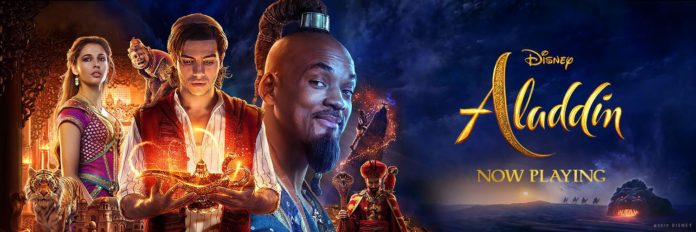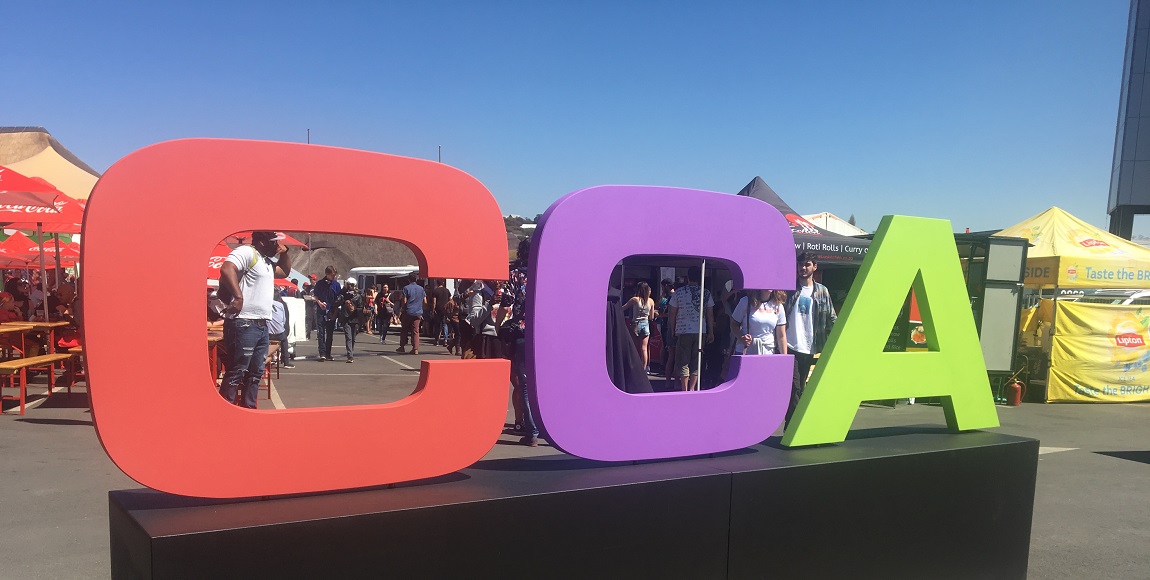REVIEW
The new Aladdin remake won’t take you wonder by wonder on a magic carpet ride, but it’s decent.
There is nothing quite as nostalgic as seeing the opening clip of the Disney logo flash across the big screen. Disney has been milking us of our wistfulness — and money — in recent years by releasing live-action remakes of its hit classics. We’ve seen Cinderella, The Jungle Book, Beauty and the Beast, and Dumbo. The latest: Guy Ritchie’s remake of Aladdin which hit theatres on May 24.
A rags to riches (and some wishes) plot
As a certified 90s kid who watched perhaps every Disney movie on video cassette, no less, there were certain expectations for the film. I wasn’t blown away. But it’s not as bad as early reviews will have you believe. Hayte it or love it, the film did what it was supposed to do. After just two weeks on circuit Aladdin raked in a whopping $604.9 million worldwide (almost R9 billion). The classic version made $504 million (about R7.5 billion) worldwide in its entire box office lifetime!
The remake sticks to the original storyline with few deviations. Aladdin, played by Mena Massoud, is a street urchin who survives on mischief and thievery in the vaguely Middle Eastern (?) fantasyland of Agrabah. Aladdin falls in love with Princess Jasmine, played by Naomi Scott, whose kindly old father, the Sultan (Navid Negahban), is being brainwashed by his evil vizier Jafar (Marwan Kenzari). In the adventure, Aladdin meets a magic carpet and a blue genie who grants him wishes. Will Smith as the genie gets his own little arc and falls for Jasmine’s handmaiden Dalia played by Nasim Pedrad.
When I was a kid, my extent of understanding the plotlines of Disney films was basic. It was good versus evil, true love triumphs all, and cute animal sidekicks who saved the day. (I will say that the computer-generated animal sidekicks in live action are just not as cute as they are in animation).
But watching Aladdin as an adult was interesting. A lot of the themes were about being stuck in the class you’re born into. Aladdin was born into nothing so he constantly grapples with being a “street rat, riff raff” and having no choice but to steal for a living. Jasmine was born into royalty but as a woman with an overprotective father (girl, we feel you) she is trapped within the palace walls, forced to marry to assume the throne. Jafar and Aladdin are the foils of one another, because both of them want to improve their place in life. But Jafar is obsessed with being the most powerful, the most wealthy – your average tyrannical evil villain. The genie, too, is literally trapped in a lamp, slave to the wishes of his master.
And Ritchie’s casting, not without its own controversy, wasn’t all that bad.
The cast was stellar, yes, even Jasmine

With his big brown eyes and an air of mischief, Massoud is the perfect Aladdin. Kenzari sans moustache is almost too good looking to play the evil Jafar, but he did a good job. Most people are not as sold with Smith as the genie, and of course Robin Williams is a tough act to follow. Smith added quite a bit of his own personality into the role with his cocky hip hop swagger reminiscent of those Fresh Prince of Bel-Air days. It worked. Then there’s the casting of Jasmine.
Brown girls everywhere grew up feeling represented by Princess Jasmine. With slim pickings in the very white array of Disney princesses, Jasmine is an OG brown Disney princess known for her trademark dark skin, almond-shaped eyes and thick black hair. Besides that, she’s headstrong, kind, and she loves her people. With the loyal tiger Rajah as her sidekick, she couldn’t get any more badass.
Of course, no one could ever live up to the real Jasmine but Scott deserves some props for her performance.
Scott’s casting as Jasmine got a lot of flack. With her mixed English and Indian ancestry and her easy-to-pronounce name, Scott’s was a “fair and lovely” casting. Her talent aside, critics were concerned that Hollywood was trying do as it does best and whitewash the cast.
There’s also some confusion surrounding her origin. Some claim Jasmine is Arab because the movie opens with a song called Arabian Nights. But others are convinced that the architecture in Agrabah is clearly based on the Taj Mahal, making Jasmine Indian. Ritchie’s solution to this orientalist debacle was to create a weird mishmash of the two.
Aladdin is an Orientalist nightmare
To enjoy Aladdin – either version – you have to accept that it’s an Orientalist nightmare.
The original Aladdin, of The Thousand and One Nights (or The Arabian Nights), was Chinese. But a team of white, Disney writers and producers Disney wrote Aladdin into the fictional country of Agrabah in the 90s. They combined everything that sounded even a little bit exotic. There’s palaces à la the Taj Mahal, magic carpets, tigers, monkeys, sultans, genies and even the oppression of women.
The oppression of women trope was particularly cringey. Jafar constantly berates Jasmine, telling her to be seen and not heard. But at the end she won’t be silenced and sings an original song called “Speechless”. It probably won’t satisfy feminists, because it’s a clumsy way to correct the patriarchal role that Jasmine originally plays. But there is an attempt.
Just looking at the costumes which combine kaftans and shalwars is enough to make you confused geographically. But I guess all brown people or Asian people are the same, so whatevs right?
This confusion translates into the film which combines Indian and Middle Eastern elements. There’s also a little bit of Bollywood thrown in for good measure.
The soundtrack is pretty great. When Jasmine and Aladdin sing “I can show you the world”, you might find yourself in tears.
For all its problems, Aladdin made for an enjoyable watch. Go see it and relive your childhood.









